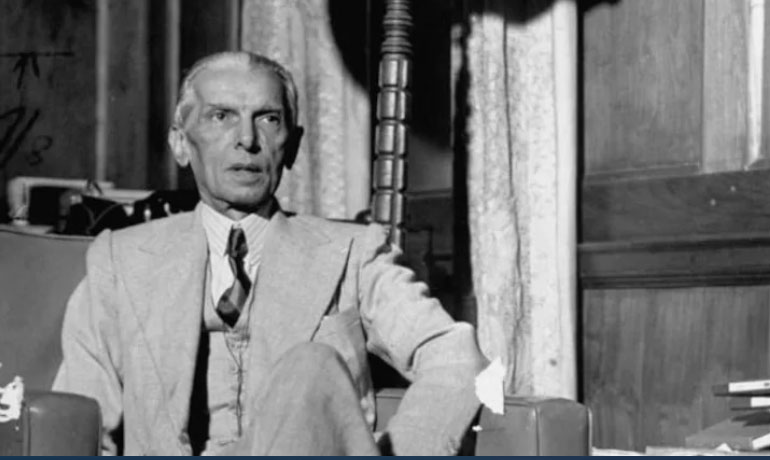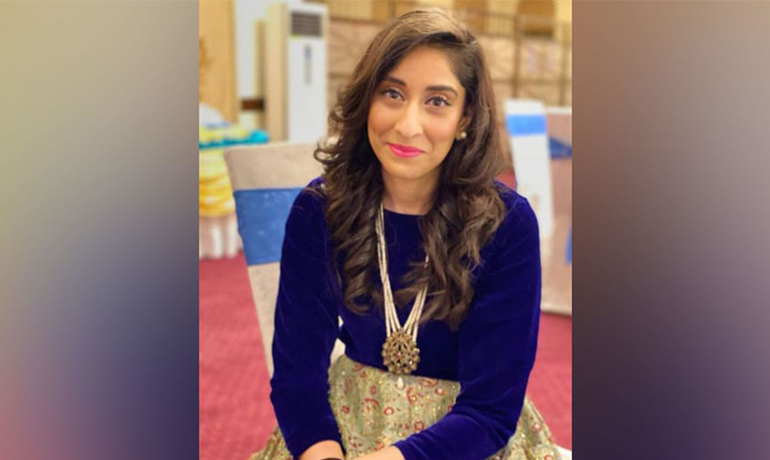“I have always maintained that no nation can ever be worthy of its existence that cannot take with them their women. No struggle can ever succeed without women ever participating side by side with men.”
Muhammad Ali Jinnah (Founder of Pakistan, Speech at Islamia College, 25th March 1940)
Muhammad Ali Jinnah brought Muslim women out of their homes and into mainstream politics, starting with the 1938 Patna session when he created a women’s wing of the Muslim League led by his sister, Fatima Jinnah – a pre-independence movement, before the country was even formed. The Women’s Movement was encouraged by men such as Jinnah, showing the progressive state of the people who encouraged an equal rights movement in which both men and women rose together and succeeded in creating a nation.
Even prior to that, women’s mobilization had taken place as far back as 1886 when the rights of women were first demanded in the Muhammadan Educational Conference (MEC). Newspapers such as Haqooq-e Niswan advocating women’s rights were started and circulated by both men and women. Between the years 1886 and 1917 ideas regarding the status of women were expressed more as awareness grew. From advocating education to supporting their rights of inheritance, it was mainly men who spoke up for women in this region. The Pan Islamic movement (Khilafat Movement, 1919-1924) where the Ali brothers were in the forefront,mobilized large numbers of Muslim women for thecause, taking part in meetings and supporting rallies. This nation’s history has shown time and again powerful women supported by great men. A wonderful fact that is mostly missed throughout our narrative.
The UN Sustainable Development Goals 2030, is a detailed and varied approach with common goals for countries onboard to legislate actionable points into their government policies. SDG 5 relates to Gender Parity, which in itself is a vast objective with multiple points as it battles multiple fronts for rights for women all around the world. To give a quick recap of the points it aims to end all forms of discrimination against women and girls everywhere. This includes elimination of all forms of violence, elimination of harmful practices such as early and forced marriages, recognition of unpaid care and domestic work through provision of public services and infrastructure, ensuring decision making in political, economic and public life with universal access to sexual and reproductive health. Globally, it is the aim that such reforms would give women equal access to economic resources, enabling technology and enforceable legislation to promote gender equality. Thus reinforcing women’s equal rights alongside men and empowering them at all levels.
Easier said than done in a region with such a complex nature as ours, one might say. However, Pakistan has not ignored these goals. There is much to catch up on, as is being done so in leaps as we bring forth the digital revolution. Notably, Digital Pakistan, the new initiative to take us forward is now being done spear-headed by a woman! Leaving a highly paying job in Google, Tanya Aidrus has been welcomed back to Pakistan by the Ministry of Information Technology and Telecommunications to head the Digital Pakistan initiatives. She is also invited this year to the World Economic Forum (WEF) to speak on IT related matters; the theme of Davos 2020: World Economic Forumbeing Stakeholders for a Cohesive and Sustainable World.
At the time of the first Indo-Pak war in 1948 the women of Pakistan – those who could – volunteered and were heavily involved with the rehabilitation of millions of refugees, as well as creating a support network for the men by creating a workforce to not only strengthen the economy but also be the support for their men. Women working and contributing to the economy in Pakistan have never been an issue. Research studies have shown women are actively participating in cottage industries and agriculture. However, this is not reflected in reported statistics as people would gauge only women working in the corporate structures. The problem is in the narrative that has been sold to the world (as it is the most comfortable narrative to sell). From the beginning of Pakistan, gender parity as well as its proper representation has become more apparent due to an overall economic decline with the combination of several factors which led to the portrayal of most of the women being shown in extreme poverty or without any education, not only in popular culture but also in documentation and the media.
Financial inclusion for women includes a diversified portfolio of topics and cannot be put with in one instance especially for a place such as Pakistan (or this region) which has a variation of social structures including tribal and biradri that include gender gaps due to cultural norms. With a total population of approximately200 million, Pakistan as a country is still in the back lash of social and financial instability and will now need to address a population of over 100 million women; an underutilized potential work force. Of this 100 million, one would have to put the bracket of those who are living in rural areas and demark 67 percent (of women in working in agriculture lands) and those who are now learning about economic independence. The goals to educate the society has been undertaken by private initiatives because government schools missed educational standards.Making education a business has become an additional problem as are outdated syllabi and no single, cohesive system to follow. Easier said than done though as an entire population would have to shift not only set cultural barriers but also change mindsets with a need for relevant education.
Financial inclusion for women includes a diversified portfolio of topics and cannot be put with in one instance especially for a place such as Pakistan (or this region) which has a variation of social structures including tribal and biradri that include gender gaps due to cultural norms
Although it is true that for many societal pressures ofmarriage and the cultural pressure of motherhood is still in the forefront-but as many face the rise in inflation and the current economy, they are seeing the goodness in a joint-income family as the future of survival, and the cities are flooded with women joining the workforce.
What is now needed with the influx of women in the workforce would be gender parity in positions of interest and equal opportunity jobs. After passing the Companies Act 2017 which mandates that corporate boards must nominate at least one woman director, the Securities and Exchange Commission of Pakistan is collaborating with the UNDP to conduct a baseline survey on how companies are reporting on their SDG initiatives. Recently, the current governments’ move to include women on boards in decision making processes has been a vital move for the country. In accordance with the SDG 5 till date, here is what has already occurred in the country.

SDG 5 and Development in Pakistan
1. In linking Human Rights with Pakistan SDGs 2030 Agenda, the Federal Ombudsperson Secretariat for Protection Against Harassment (FOSPAH), functional at a federal and provincial level has been quite active in women’s protection and awareness campaigns. This office has instituted a formal Code of Conduct to be implemented at workplaces to prevent sexual harassment and to ensure a safe working environment. The scope of this office is set to expand with the passage of the Ordinance for Protection of Women Rights on Properties by the Parliament. A toll-free telephone helpline is also set up that provides legal advice on human rights violations has been made operational and is providing assistance to thousands already.
2. The National Commission on the Status of Women (NCSW) has prepared a comprehensive roadmap in preventing violence against women. This includes tracking high profile cases such as domestic violence, cyber-crime, acid crimes and honor killings.
3. The Senate in April 2019 approved the Child Marriage Restraint (Amendment) Bill which proposes the legal minimum age to be set at 18 in the country.
4. In order to address crime in the digital age in the recent years, the National Response Centre for Cyber Crime in Pakistan has been established; its mandate which was started several years ago is now a full setup which is run in each large city, and one of the most efficient crime units; a brilliant measure in terms of threats by cyber-bullying and threats faced by both men and women.
5. The year 2020 opened up with the country rejoicing over the Zainab Alert, Recovery & Response Bill being passed by the National Assembly (NA). The bill will introduce a response and recovery mechanisms for missing children (under the age of 18 years). A special agency will be set up focusing on missing children; a vital step towards child protection laws.
The above are just a few of the examples listed of changes that have been set in motion amongst the many. With the social barriers being lifted slowly and gradually (that were not meant to be in the first place) and with Pakistan now very much in the forefront with a newer outlook, a change of systems is an inevitable lead to progress. Here, we are hoping that the multiple scenarios of gender inclusion in a freer society are established for prosperity and a more sustainable future.






